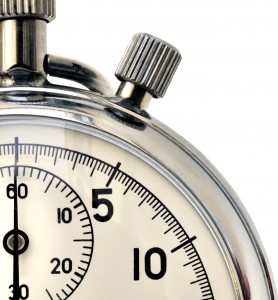This website uses cookies so that we can provide you with the best user experience possible. Cookie information is stored in your browser and performs functions such as recognising you when you return to our website and helping our team to understand which sections of the website you find most interesting and useful.

Susan E. Mazer, Ph.D. Blog
Thoughts and ideas on healthcare
Hi, and welcome to my blog! I'm Susan E. Mazer -- a knowledge expert and thought leader on how the environment of care impacts the patient experience. Topics I write about include safety, satisfaction, hospital noise, nursing, care at the bedside, and much more.
Keeping Time with the Patient Experience
May 23, 2014
 As a musician for many years, the idea of “keeping time” was never mysterious — even as a young child. Keeping time meant staying in rhythm, in tempo.
As a musician for many years, the idea of “keeping time” was never mysterious — even as a young child. Keeping time meant staying in rhythm, in tempo.
In some ways, when I was trying to play faster, it meant arriving at “ONE,” the downbeat, on time. Any hesitation was an obvious and embarrassing mistake.
As an adult, the idea of “keeping time” means something quite different. And, from my own patient experience last summer, I know that a patient’s time is not always kind.
I also realized that the rhythm of the hospital staff, the physicians, and the medication was not in sync with my condition or my pain.
Everything in healthcare is measured in time. On the hospital side, it is about length of stay, billing cycles, and staffing schedules. On the patient side, it begins with being left on hold while trying to make a doctor’s appointment, waiting rooms, and waiting in the examination room.
All of this continues with time spent waiting for results of a test or waiting for a pain med to work. Then, when we deal with the real stuff when it is a prognosis, the question is always, “how long?” Time is the currency of all things healthcare, all things life.
We bargain with time, but it does not bargain with us. Rather, time moves along no matter what, in many ways like the metronome that ticks and ticks and ticks. Clock time never stops, either.
Lived time, however, is another story. Experienced minute to minute, it is difficult to harness or predict. In some ways, the down-beat, ONE, can happen any time.
Lived time speeds up and slows down — it can drag on forever, and then speed up to the point that we have to look back to know it has passed. If we accept that our experience of time is more elastic than being simply measured in hours and minutes, then we can do a better job of keeping time, being sensitive to the rhythm of our patients.
One thing music does is order time. It parallels the lived experience. It provides emotional character to an otherwise painfully indifferent blankness of an unfamiliar hospital room. It moves along in a temporal world and takes everyone with it.
Music can speed up our time or slow it down. We entrain to it, literally tapping our foot or finger unconsciously.
In the hospital, music breaks through the isolation that is often felt by patients whose lives are defined by the edges of a hospital bed or the walls of their rooms. It makes the pace of their life world easier. It fills the space and the time, especially when no one is with them.
If you’re stressed out, listen to the music you love and let it carry you to another place. Frightened? Listen to music you know so that the unfamiliar becomes familiar.
If you need a break, listen to what will take you away, to another place and time. It will allow you to return refreshed.
Every week, we get phone calls, emails, or letters from patients and family members who tell us how The C.A.R.E. Channel helped them endure their lonely hours in the hospital. The combination of music and nature is clearly restorative and supportive for all involved in a hospital stay.
Transforming time, smoothing it out, softening the ways it passes — this is why music is so important at the bedside. And, keeping time with our patients, being in rhythm with them, is critical to optimizing their experience.
P.S. If you like this post, please do me a favor and share on LinkedIn, Twitter, Facebook, etc. Also to get automatic notices when a new post is published, subscribe (upper right). No spam – just great content. Thanks!










